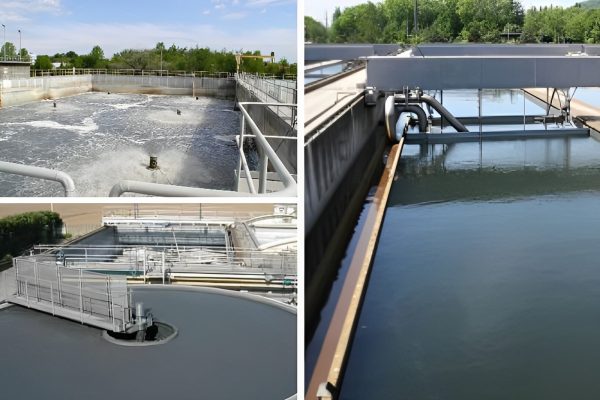Introduction
Project Report For Water Treatment is as follows.
Water treatment is the process of cleaning water to make it safe and acceptable for use in a variety of applications such as drinking, industrial usage, and irrigation. It consists of a series of physical, chemical, and biological procedures that remove toxins and impurities from water, therefore maintaining its purity and lowering the risk of waterborne illnesses. Water treatment’s major purpose is to eliminate or diminish the presence of potentially dangerous substances such as bacteria, viruses, parasites, chemical and inorganic compounds, and suspended particles. The precise treatment procedures used are determined by the source water’s quality and the intended use of the treated water.
The water treatment process often begins with the absorption of raw water from a natural source such as rivers, lakes, or underground wells. The water is then treated to a number of pre-treatment stages to remove big debris and silt using methods such as screening and sedimentation. This protects downstream equipment and avoids blockage. Following pre-treatment, the water proceeds through many purification processes. Chemicals are typically added to the water to assist clump together tiny particles into bigger flocs, making them easier to remove. The water is then run through filters such as sand, activated carbon, or membranes to catch any leftover suspended particles, bacteria, or germs.
Chemical disinfection is an important phase in water treatment that involves using disinfectants such as chlorine, ozone, or ultraviolet radiation to destroy or inactivate any residual bacteria. The disinfection procedure successfully eliminates hazardous germs, rendering the water safe for consumption. Additional treatment methods may be applied depending on the unique requirements. Among these are enhanced oxidation, ion exchange, adsorption, and reverse osmosis. These procedures are used to remove certain impurities such as organic pollutants, heavy metals, or excess salts, ensuring that the water fulfils certain quality criteria.

Types Of Water Treatment
Safe Drinking Water: Water treatment eliminates harmful impurities and pathogens from water sources, guaranteeing the provision of safe and clean drinking water. This contributes to the prevention of waterborne infections and promotes public health.
Environmental Protection: Water treatment decreases the discharge of contaminants into rivers, lakes, and seas, reducing the harmful impact on aquatic ecosystems. Water treatment aids in the preservation and protection of natural water resources by eliminating contaminants and managing chemical release.
Industrial and Agricultural Applications: Treated water is essential for a variety of industrial operations, including manufacturing, power generation, and cooling systems. Water treatment ensures high-quality water for these businesses, guaranteeing efficient operations while minimising environmental effect. Furthermore, treated water is utilised for irrigation in agriculture, which aids crop development and food production.
Resource Conservation: Water treatment encourages effective water usage by recycling and reusing treated water in non-potable applications. This conserves water resources and lessens the load on freshwater supply.
Market Potential Of Water Treatment
The market for wastewater treatment plants was predicted to be worth $117.2 billion in 2021, and it is anticipated to grow at a CAGR of 5.8% from 2021 to 2030.
In order for humanity to fulfil the increasing demand for water resources, not only for municipal and agricultural uses but also for vital industrial activities, water and wastewater treatment is required. Currently, places with a critical water stress rating are home to more than 40% of the world’s population. Only around 1% of the water on Earth is freshwater, thus nations with severe water shortages are forced to use the desalination process to cleanse saltwater so that it can be converted to freshwater.
For instance, at the third MENA Desalination Projects Forum 2022 in March 2022, Saudi Arabia disclosed more than sixty water treatment projects. By the end of 2027, these projects will have quadrupled the nation’s desalination capacity.
According to a ‘Global Water Leaders’ group survey, industrial water consumption is expected to fall by around 27% over fiscal year 2019-2020. On the other hand, numerous nations have declared emergency measures that are expected to have an impact on municipal water treatment income.
Project Report Sample On Water Treatment
Need Help?
Create 100% Bankable Project Report

